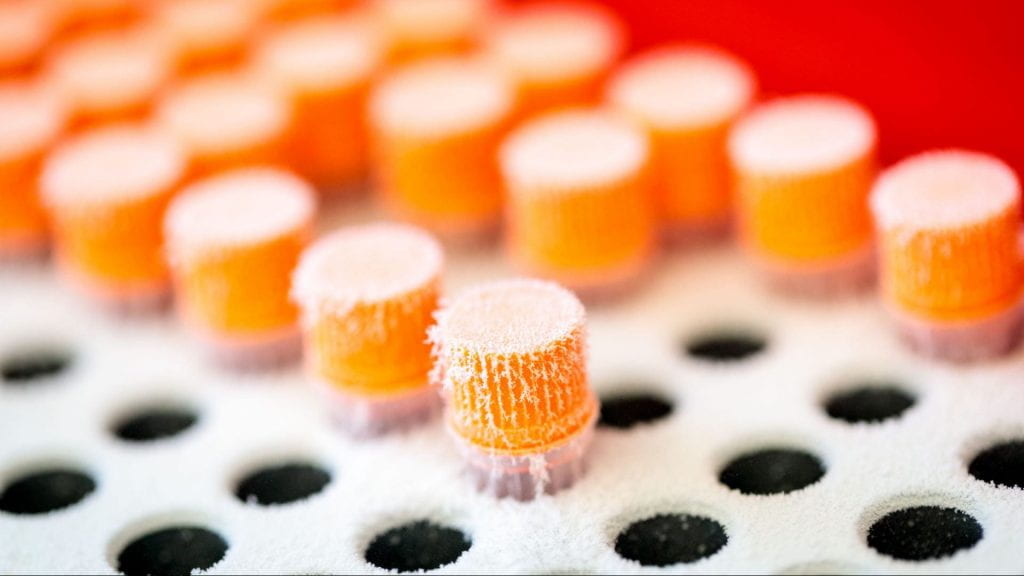Ultra-Low Temperature Freezers (ULTs) are a critical piece of equipment in many research labs and are designed to protect valuable samples. Capable of reaching temperatures as low as -85 degrees Celsius (or -121 degrees Fahrenheit), ULTs require a significant amount of electricity to operate — more than a typical American home — and are thereby responsible for a significant amount of greenhouse gas emissions upstream at power plants.
Since the fall of 2017, representatives of the Office of Sustainability, Resource Management, the Operations and Facilities Management Department at the School of Medicine, and Environmental Health & Safety have been exploring opportunities to reduce the carbon footprint of WashU’s ULTs. The group found that each unit consumes an average of 31.9 kilowatt-hours (kWh) of electricity per day, which is 12% more electricity than the average US home. With over 900 units across our campuses, WashU’s ULT fleet uses an estimated 10.5 million kWh of energy each year, which results in ~8,000 metric tons of carbon emissions. ULT freezers alone account for approximately 3.4% of WashU’s electricity use!
In recent years, ULT manufacturers have developed a number of high efficiency models that use significantly less energy and are cost competitive. As a strategy to meet our 2020 greenhouse gas reduction goal, the university adopted a High Efficiency Ultra-Low Temperature (HE ULT) Freezer Policy on March 1st, 2019. The new policy requires all new ULT freezer purchases to be high-efficiency models. By gradually replacing of our conventional ULT freezers with high efficiency units as old units are retired, we project to save nearly 2.7 million kWh of electricity, or ~2,000 Metric Tons of CO2. This 25.5% reduction in energy use is the equivalent of permanently taking 400+ passenger vehicles off the road!
Beyond being big energy users, ULT freezers contain hydrofluorocarbon (HFC) refrigerants that have extremely high Global Warming Potentials (GWP). With GWPs that are 1,000 to 12,000 times that of carbon dioxide, HFCs are one of the most potent greenhouse gases known to humankind. WashU’s ULT policy requires new freezers to use natural refrigerants with low GWPs — commonly less than 5 times that of carbon dioxide — such as propane.
Because most refrigerant emissions occur at the end of a refrigerator’s life (mainly through leakage of the refrigerant), it is imperative that old freezers are phased out and are disposed of safely through Environmental Health & Safety. After careful removal and proper storage, used refrigerants can be purified for repurposing, or changed to other chemicals with lower GWPs.
Scientists estimate that the phasing out of hydrofluorocarbons (HFCs) planned through the Kigali accord will reduce global warming by nearly one degree Fahrenheit.
Further Reading: Project Drawdown ranks refrigerant management as the first solution to address global warming.
Read the full policy here. To learn more about the new policy and to inquire about approved models, contact Angela Lochmann (Resource Management) alochmann@wustl.edu or Alicia Hubert (OFMD)(aliciahubert@wustl.edu).
